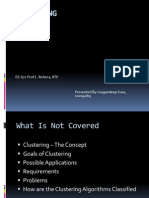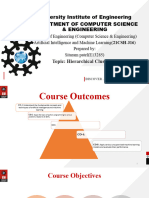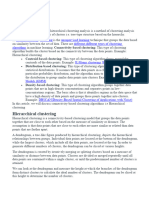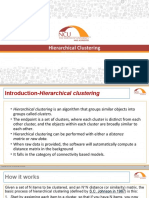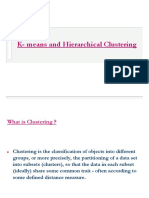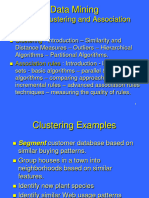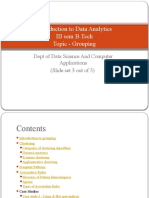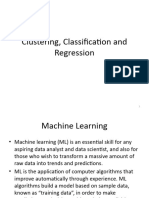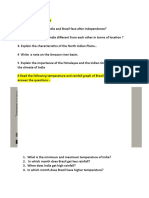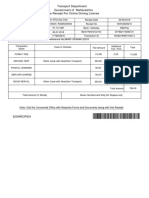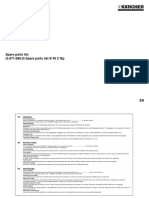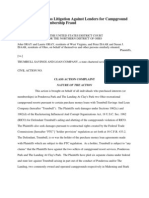0% found this document useful (0 votes)
110 views110 pagesClustering Methods and Algorithms
The document discusses clustering algorithms. It introduces clustering and describes its basic idea of grouping similar data together. It then covers several types of clustering algorithms including hierarchical, partitional, and density-based clustering. It specifically describes hierarchical agglomerative clustering and the single link and complete link approaches. It provides examples to illustrate how these algorithms work on sample distance matrices.
Uploaded by
Krishnan SwamiCopyright
© © All Rights Reserved
We take content rights seriously. If you suspect this is your content, claim it here.
Available Formats
Download as PDF, TXT or read online on Scribd
0% found this document useful (0 votes)
110 views110 pagesClustering Methods and Algorithms
The document discusses clustering algorithms. It introduces clustering and describes its basic idea of grouping similar data together. It then covers several types of clustering algorithms including hierarchical, partitional, and density-based clustering. It specifically describes hierarchical agglomerative clustering and the single link and complete link approaches. It provides examples to illustrate how these algorithms work on sample distance matrices.
Uploaded by
Krishnan SwamiCopyright
© © All Rights Reserved
We take content rights seriously. If you suspect this is your content, claim it here.
Available Formats
Download as PDF, TXT or read online on Scribd
/ 110
